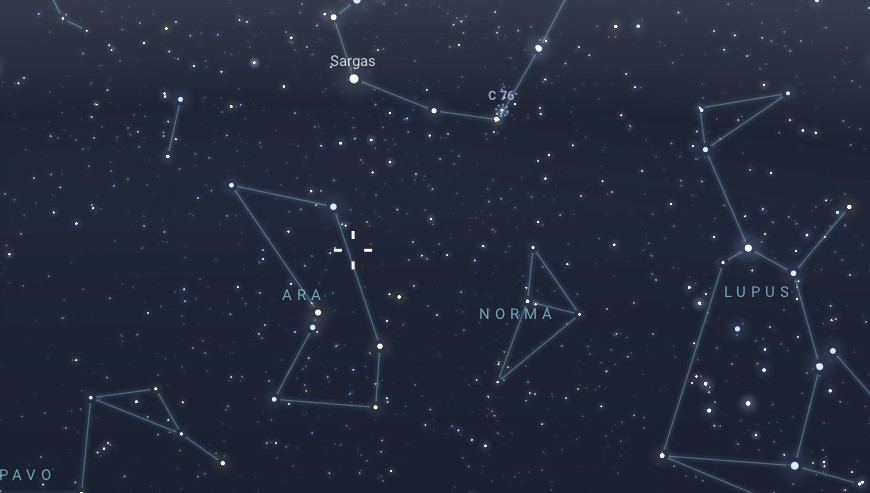NGC 6326 is a planetary nebula located in the constellation Ara, approximately 11,000 light-years from Earth. Planetary nebulae are shells of ionized gas expelled by stars during the final stages of their evolution. NGC 6326 exemplifies this process, representing a phase in the life cycle of a Sun-like star as it transitions to a white dwarf.
The nebula was discovered by English astronomer John Herschel in 1837 during his observations of the southern sky. Below are some key details about this fascinating celestial object:
Physical Characteristics
NGC 6326’s central star is a white dwarf, the remnant of a Sun-like star that has shed its outer layers into space. It is these outer layers form the nebula we can see in telescopes. The central star is extremely hot, with temperatures reaching tens of thousands of degrees Celsius.
The nebula itself appears as a bright, somewhat circular structure with intricate filamentary details when observed through telescopes. The shape and appearance of planetary nebulae can vary widely, often influenced by the characteristics of the star that formed them and the dynamics of the surrounding interstellar medium.
Location in the Galaxy
NGC 6326 is located in the Ara constellation, which lies in the southern sky near the Milky Way’s plane. This suggests that the nebula resides in or near one of the spiral arms of our galaxy, likely the Scutum-Centaurus Arm. Many planetary nebulae are found in the galactic plane since this region contains a higher density of stars, including those in the late stages of stellar evolution.
Evolutionary Stage
NGC 6326 is in the final stages of its stellar evolution. The central star is gradually cooling down and fading away as a white dwarf. Over millions of years, the expelled gas and dust from the nebula will disperse further into space, eventually becoming part of the interstellar medium and potentially contributing to the formation of new stars and planetary systems. The study of planetary nebulae like this one helps astronomers understand how stars enrich the interstellar environment with heavier elements, which play a crucial role in the formation of planets and life.
Observation
NGC 6326 can be observed from the Southern Hemisphere, as it is located in the constellation Ara, which is well-positioned at high altitudes in southern skies. However, visibility may vary based on local weather conditions and light pollution levels. With a visual magnitude between 11.5 and 12.5, NGC 6326 is faint and requires a telescope for observation, especially given its small size and distance from Earth.

The best months to observe NGC 6326 are between June and November (winter and spring in the Southern Hemisphere), when Ara is higher in the night sky during evening hours. During these months, longer nights and favourable atmospheric conditions enhance the chances of clear views.
As observation opportunities depend on your exact location and local conditions, it’s helpful to consult a star chart or astronomy app for optimal viewing times. For the best experience, plan your observation on nights with minimal moonlight and clear skies.



